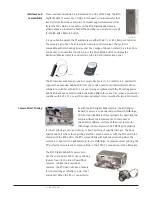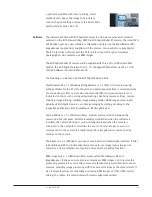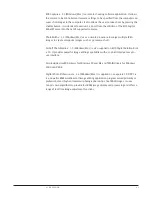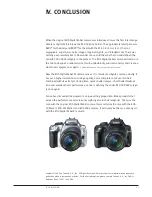
III. DISCUSSION
12
Autofocus
With the addition of the DIGIC II and some fine-tuning,
the AF system of the EOS Digital Rebel camera has
been adapted to the Rebel XT camera and is fully
compatible with the handling speed of the new camera.
The EOS Digital Rebel XT camera uses the same 7-point,
TTL-CT-SIR (TTL Cross Type secondary image registration)
AF sensor as the EOS Digital Rebel camera, as well as
the same 32-bit RISC (reduced instruction set)
microcomputer. The AF speed and predictive AF
performance are faster than or equal to the previous
camera. With an EF 300mm f/2.8L IS USM lens, it can
focus track a subject approaching at 186 mph up to
about 66 feet away. The brightness range required for
focusing is EV 0.5 to 18.
In the Creative Zone modes, the user can now select the
AF mode: One-Shot AF (When focus is achieved, the AF
operation stops and focus is locked), Predictive AI Servo
AF (tracks movement and focuses continuously until the
start of the exposure), or AI Focus AF (automatic selection
of One-Shot AF or Predictive AI Servo AF based on
analysis of subject movement).
As with the EOS Digital Rebel camera, the EOS Digital Rebel XT camera’s predictive
AF computation uses statistical prediction that samples the focusing data at a
very rapid rate. If focusing operations are repeated in a short period of time, the
predictive AF control can operate more effectively from the first shot, even for a
subject moving erratically. Additionally, even if the subject’s movement changes just
before the shutter is released, the predictive AF control will have a good chance of
catching it.
4.4
7.34
3
.6
7
Approaching
Subject
Speed
Closest distance to the camera for continuous
AI Servo AF (w/ EF 300mm f/2.8L IS USM)
31mph
186mph
66 ft.
38 ft.
26 ft.
62mph
*According to a test of all movable mirror type SLR cameras made by Canon (Feb.1, 2000).
Predictive AI Servo AF












































